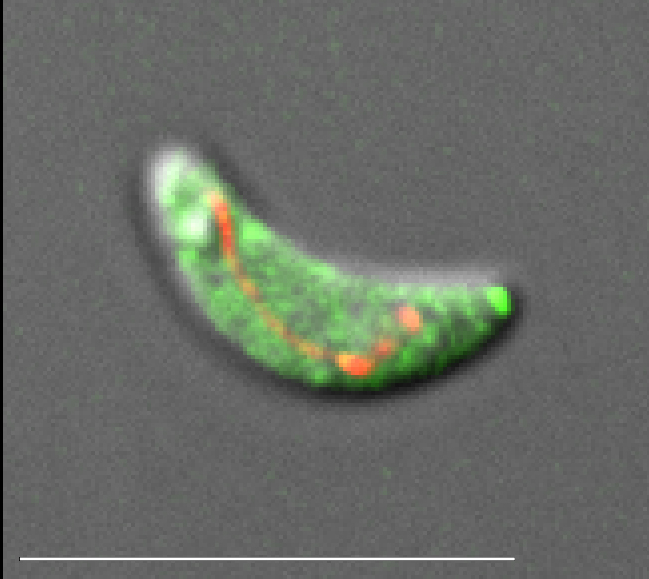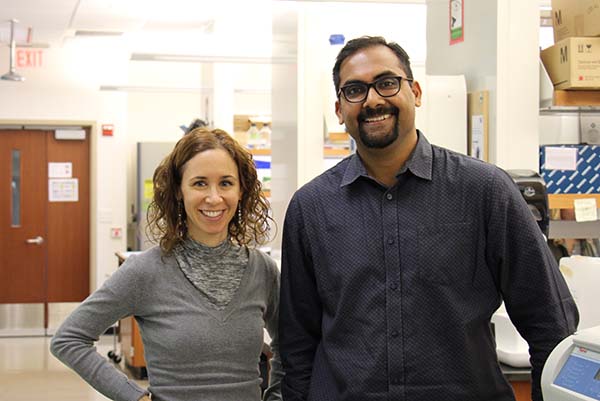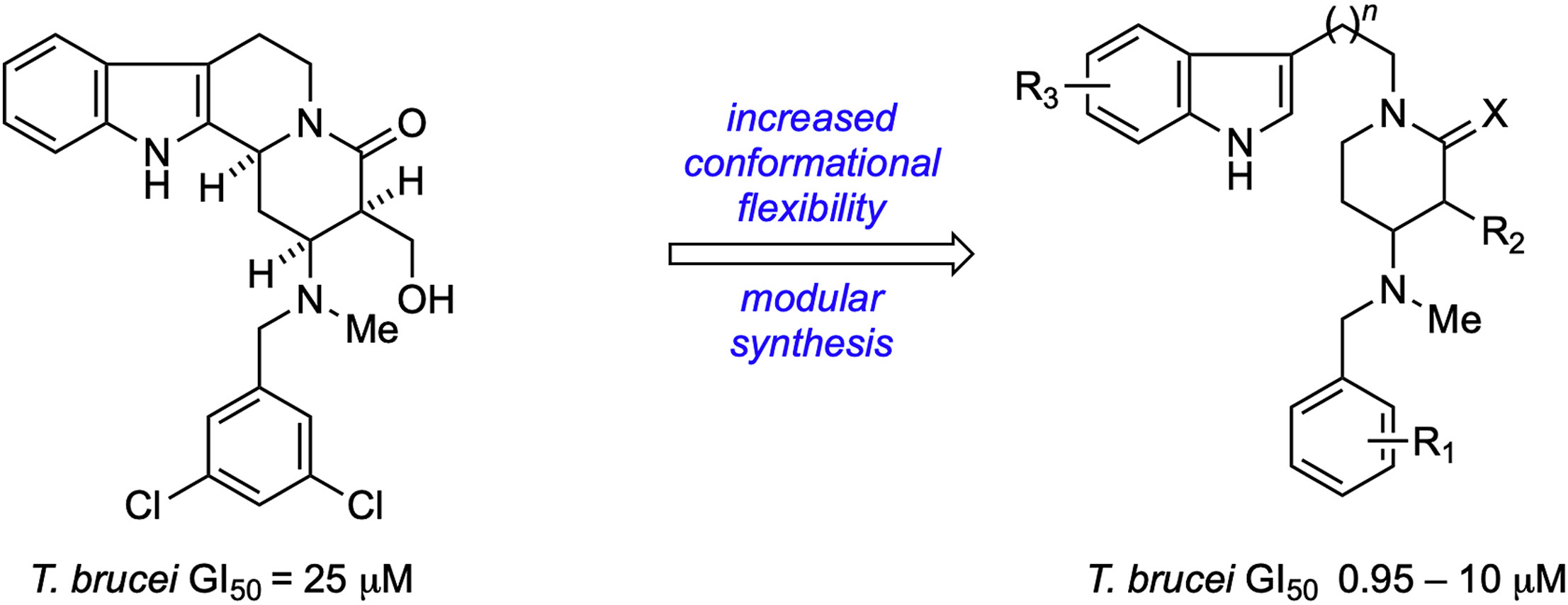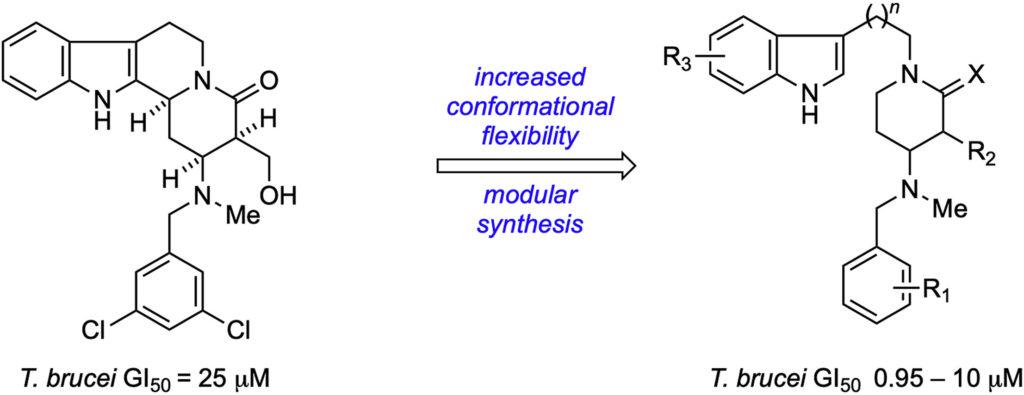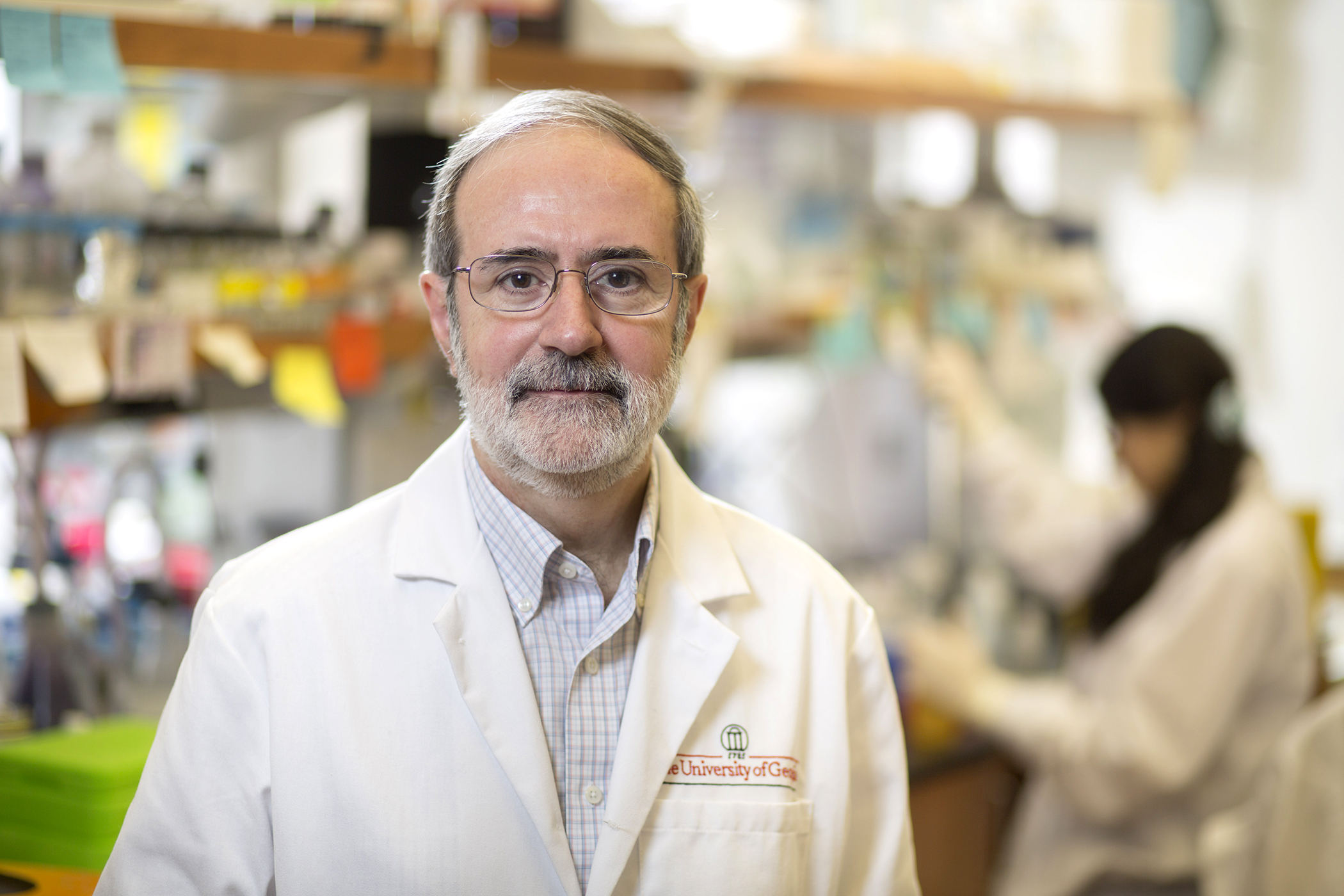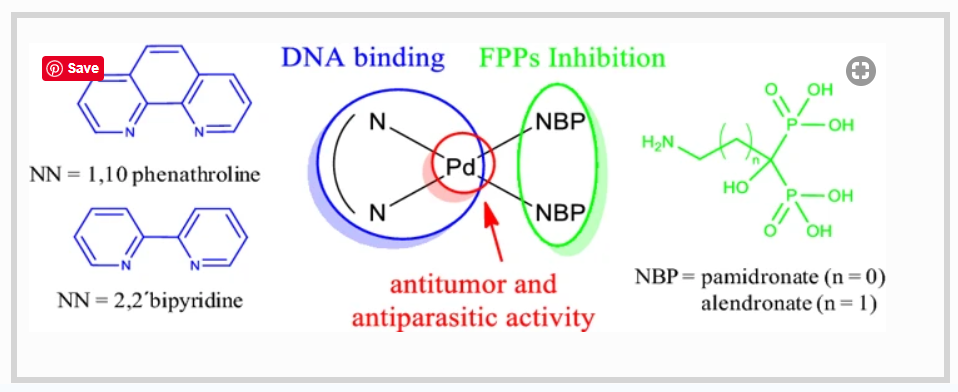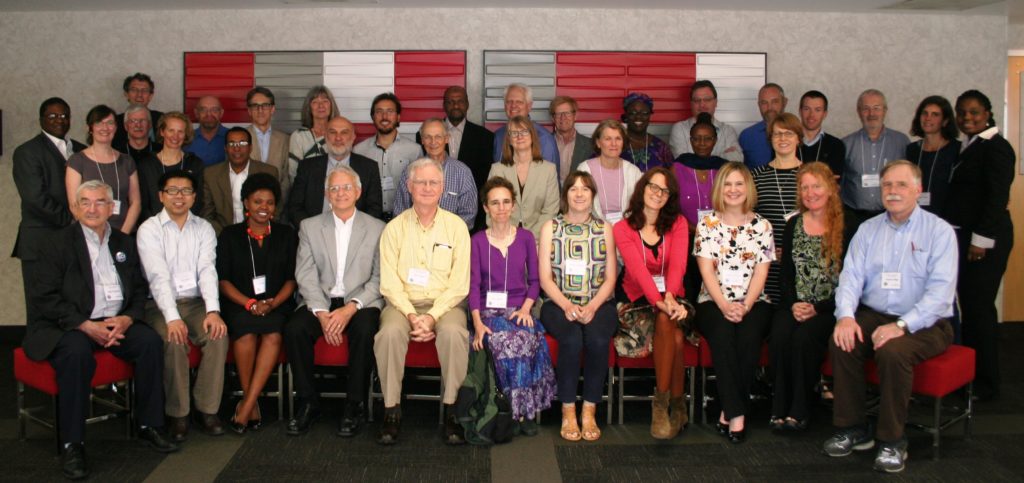
These articles are available online ahead of print and summarize much of the work of the Schistosomiasis Consortium for Operational Research and Evaluation (SCORE). The articles will be published as a supplement to the July issue of The American Journal of Tropical Medicine and Hygiene.
Schistosomiasis Consortium for Operational Research and Evaluation: Mission Accomplished
The Schistosomiasis Consortium for Operational Research and Evaluation (SCORE), a program focusing on schistosomiasis control in sub-Saharan Africa between 2008 and 2019, investigated ways to improve coverage and efficacy of ongoing chemotherapy programs and concluded that because of continued transmission, mass distribution of praziquantel cannot eliminate the disease without complementary control activities. Schistosomiasis Consortium for Operational Research and Evaluation’s activities comprised large-scale, multicountry field studies comparing various mass drug administration strategies and some specific research avenues, such as assessment of high-sensitivity diagnostics, identification of hotspots, quantification of the role of the snail host, predictive modeling, and changes in schistosome population genetics under drug pressure. The discoveries made and the insights gained regarding cost-effective strategies for delivering preventive chemotherapy should assist policy makers to develop guidelines for the control and ultimate elimination of schistosomiasis.
N. Robert Bergquist. Am J Trop Med Hyg. 2020 May 12. doi: 10.4269/ajtmh.19-0838
Schistosomiasis Consortium for Operational Research and Evaluation (SCORE): Its Foundations, Development, and Evolution
The Schistosomiasis Consortium for Operational Research and Evaluation (SCORE) was established in late 2008 to conduct operational research that would inform practices related to the control and elimination of schistosomiasis. This article traces SCORE’s beginnings and underpinnings. These include an emphasis on openness and contributing to the development of a cohesive schistosomiasis control community, building linkages between researchers and national programs, and focusing on answering questions that will help Neglected Tropical Disease program managers to better control and eliminate schistosomiasis. It describes the development and implementation of SCORE’s multiple projects. SCORE began by drawing on advice from a broad range of experts by holding wide-ranging meetings that informed the priorities and protocols for SCORE research. SCORE’s major efforts included large, multicountry field studies comparing multiple strategies for mass drug administration with praziquantel, assessment of approaches to elimination, evaluation of a point-of-care assay for field mapping Schistosoma mansoni, and increasing the sensitivity of a laboratory-based diagnostic. SCORE also supported studies on morbidity due to schistosomiasis, quantification of vector snails and the detection of schistosome infections in snails, and changes in schistosome population genetics under praziquantel drug pressure. SCORE data and specimens are archived and will remain available for future research. Although much remains to be carried out, our hope is that through the already published articles and SCORE results described in this supplement, we will have provided a body of evidence to assist policy makers in the development of judicious guidelines for the control and elimination of schistosomiasis.
Daniel G. Colley, Julie A. Jacobson and Sue Binder. Am J Trop Med Hyg. 2020 May 12. doi: 10.4269/ajtmh.19-0785.
Impact of Different Mass Drug Administration Strategies for Gaining and Sustaining Control of Schistosoma mansoni and Schistosoma haematobium Infection in Africa
This report summarizes the design and outcomes of randomized controlled operational research trials performed by the Bill & Melinda Gates Foundation–funded Schistosomiasis Consortium for Operational Research and Evaluation (SCORE) from 2009 to 2019. Their goal was to define the effectiveness and test the limitations of current WHO-recommended schistosomiasis control protocols by performing large-scale pragmatic trials to compare the impact of different schedules and coverage regimens of praziquantel mass drug administration (MDA). Although there were limitations to study designs and performance, analysis of their primary outcomes confirmed that all tested regimens of praziquantel MDA significantly reduced local Schistosoma infection prevalence and intensity among school-age children. Secondary analysis suggested that outcomes in locations receiving four annual rounds of MDA were better than those in communities that had treatment holiday years, in which no praziquantel MDA was given. Statistical significance of differences was obscured by a wider-than-expected variation in community-level responses to MDA, defining a persistent hot spot obstacle to MDA success. No MDA schedule led to elimination of infection, even in those communities that started at low prevalence of infection, and it is likely that programs aiming for elimination of transmission will need to add supplemental interventions (e.g., snail control, improvement in water, sanitation and hygiene, and behavior change interventions) to achieve that next stage of control. Recommendations for future implementation research, including exploration of the value of earlier program impact assessment combined with intensification of intervention in hot spot locations, are discussed.
Charles H. King, Nupur Kittur, Sue Binder, Carl H. Campbell Jr., Eliézer K. N’Goran, Aboulaye Meite, Jürg Utzinger, Annette Olsen, Pascal Magnussen, Safari Kinung’hi, Alan Fenwick, Anna E. Phillips, Pedro H. Gazzinelli-Guimaraes, Neerav Dhanani, Josefo Ferro, Diana M. S. Karanja, Pauline N. M. Mwinzi, Susan P. Montgomery, Ryan E. Wiegand, William Evan Secor, Amina A. Hamidou, Amadou Garba and Daniel G. Colley. Am J Trop Med Hyg. 2020 May 12. doi: 10.4269/ajtmh.19-0829.
Discovering, Defining, and Summarizing Persistent Hotspots in SCORE Studies
The Schistosomiasis Consortium for Operational Research and Evaluation (SCORE) conducted large field studies on schistosomiasis control and elimination in Africa. All of these studies, carried out in low-, moderate-, and high-prevalence areas, resulted in a reduction in prevalence and intensity of Schistosoma infection after repeated mass drug administration (MDA). However, in all studies, there were locations that experienced minimal or no decline or even increased in prevalence and/or intensity. These areas are termed persistent hotspots (PHS). In SCORE studies in medium- to high-prevalence areas, at least 30% of study villages were PHS. There was no consistent relationship between PHS and the type or frequency of intervention, adequacy of reported MDA coverage, and prevalence or intensity of infection at baseline. In a series of small studies, factors that differed between PHS and villages that responded to repeated MDA as expected included sources of water for personal use, sanitation, and hygiene. SCORE studies comparing PHS with villages that responded to MDA suggest the potential for PHS to be identified after a few years of MDA. However, additional studies in different social-ecological settings are needed to develop generalizable approaches that program managers can use to identify and address PHS. This is essential if goals for schistosomiasis control and elimination are to be achieved.
Nupur Kittur, Carl H. Campbell Jr., Sue Binder, Ye Shen, Ryan Wiegand, Joseph R. Mwanga, Safari M. Kinung’hi, Rosemary M. Musuva, Maurice R. Odiere, Sultani H. Matendechero, Stefanie Knopp and Daniel G. Colley. Am J Trop Med Hyg. 2020 May 12. doi: 10.4269/ajtmh.19-0815.
SCORE Studies on the Impact of Drug Treatment on Morbidity due to Schistosoma mansoni and Schistosoma haematobium Infection
The Schistosomiasis Consortium for Operational Research (SCORE) was funded in 2008 to improve the evidence base for control and elimination of schistosomiasis—better understanding of the systemic morbidities experienced by children in schistosomiasis-endemic areas and the response of these morbidities to treatment, being essential for updating WHO guidelines for mass drug administration (MDA) in endemic areas. This article summarizes the SCORE studies that aimed to gauge the impact of MDA-based treatment on schistosomiasis-related morbidities. Morbidity cohort studies were embedded in the SCORE’s larger field studies of gaining control of schistosomiasis in Kenya and Tanzania. Following MDA, cohort children had less undernutrition, less portal vein dilation, and increased quality of life in Year 5 compared with baseline. We also conducted a pilot study of the Behavioral Assessment System for Children (BASC-2) in conjunction with the Kenya gaining control study, which demonstrated beneficial effects of treatment on classroom behavior. In addition, the SCORE’s Rapid Answers Project performed systematic reviews of previously available data, providing two meta-analyses related to morbidity. The first documented children’s infection-related deficits in school attendance and achievement and in formal tests of learning and memory. The second showed that greater reductions in egg output following drug treatment correlates significantly with reduced odds of most morbidities. Overall, these SCORE morbidity studies provided convincing evidence to support the use of MDA to improve the health of school-aged children in endemic areas. However, study findings also support the need to use enhanced metrics to fully assess and better control schistosomiasis-associated morbidity.
Charles H. King, Sue Binder, Ye Shen, Christopher C. Whalen, Carl H. Campbell Jr., Ryan E. Wiegand, Annette Olsen, William Evan Secor, Susan P. Montgomery, Rosemary Musuva, Pauline N. M. Mwinzi, Pascal Magnussen, Safari Kinung’hi, Gisele N. Andrade, Amara E. Ezeamama and Daniel G. Colley. Am J Trop Med Hyg. 2020 May 12. doi: 10.4269/ajtmh.19-0830
Challenges in Protocol Development and Interpretation of the Schistosomiasis Consortium for Operational Research and Evaluation Intervention Studies
In 2010, the Schistosomiasis Consortium for Operational Research and Evaluation (SCORE) began the design of randomized controlled trials to compare different strategies for praziquantel mass drug administration, whether for gaining or sustaining control of schistosomiasis or for approaching local elimination of Schistosoma transmission. The goal of this operational research was to expand the evidence base for policy-making for regional and national control of schistosomiasis in sub-Saharan Africa. Over the 10-year period of its research programs, as SCORE operational research projects were implemented, their scope and scale posed important challenges in terms of research performance and the final interpretation of their results. The SCORE projects yielded valuable data on program-level effectiveness and strengths and weaknesses in performance, but in most of the trials, a greater-than-expected variation in community-level responses to assigned schedules of mass drug administration meant that identification of a dominant control strategy was not possible. This article critically reviews the impact of SCORE’s cluster randomized study design on performance and interpretation of large-scale operational research such as ours.
Charles H. King, Nupur Kittur, Ryan E. Wiegand, Ye Shen, Yang Ge, Christopher C. Whalen, Carl H. Campbell Jr., Jan Hattendorf and Sue Binder. Am J Trop Med Hyg. 2020 May 12. doi: 10.4269/ajtmh.19-0805.
Evaluation, Validation, and Recognition of the Point-of-Care Circulating Cathodic Antigen, Urine-Based Assay for Mapping Schistosoma mansoni Infections
Efforts to control Schistosoma mansoni infection depend on the ability of programs to effectively detect and quantify infection levels and adjust programmatic approaches based on these levels and program goals. One of the three major objectives of the Schistosomiasis Consortium for Operational Research and Evaluation (SCORE) has been to develop and/or evaluate tools that would assist Neglected Tropical Disease program managers in accomplishing this fundamental task. The advent of a widely available point-of-care (POC) assay to detect schistosome circulating cathodic antigen (CCA) in urine with a rapid diagnostic test (the POC-CCA) in 2008 led SCORE and others to conduct multiple evaluations of this assay, comparing it with the Kato–Katz (KK) stool microscopy assay—the standard used for more than 45 years. This article describes multiple SCORE-funded studies comparing the POC-CCA and KK assays, the pros and cons of these assays, the use of the POC-CCA assay for mapping of S. mansoni infections in areas across the spectrum of prevalence levels, and the validation and recognition that the POC-CCA, although not infallible, is a highly useful tool to detect low-intensity infections in low-to-moderate prevalence areas. Such an assay is critical, as control programs succeed in driving down prevalence and intensity and seek to either maintain control or move to elimination of transmission of S. mansoni.
Daniel G. Colley, Charles H. King, Nupur Kittur, Reda M. R. Ramzy, William Evan Secor, Merlene Fredericks-James, Giuseppina Ortu, Michelle N. Clements, Eugene Ruberanziza, Irenee Umulisa, Udo Wittmann and Carl H. Campbell Jr. Am J Trop Med Hyg. 2020 May 12. doi: 10.4269/ajtmh.19-0788.
Circulating Anodic Antigen (CAA): A Highly Sensitive Diagnostic Biomarker to Detect Active Schistosoma Infections—Improvement and Use during SCORE
The Schistosomiasis Consortium for Operational Research and Evaluation (SCORE) was funded in 2008 to conduct research that would support country schistosomiasis control programs. As schistosomiasis prevalence decreases in many places and elimination is increasingly within reach, a sensitive and specific test to detect infection with Schistosoma mansoni and Schistosoma haematobium has become a pressing need. After obtaining broad input, SCORE supported Leiden University Medical Center (LUMC) to modify the serum-based antigen assay for use with urine, simplify the assay, and improve its sensitivity. The urine assay eventually contributed to several of the larger SCORE studies. For example, in Zanzibar, we demonstrated that urine filtration, the standard parasite egg detection diagnostic test for S. haematobium, greatly underestimated prevalence in low-prevalence settings. In Burundi and Rwanda, the circulating anodic antigen (CAA) assay provided critical information about the limitations of the stool-based Kato–Katz parasite egg-detection assay for S. mansoni in low-prevalence settings. Other SCORE-supported CAA work demonstrated that frozen, banked urine specimens yielded similar results to fresh ones; pooling of specimens may be a useful, cost-effective approach for surveillance in some settings; and the assay can be performed in local laboratories equipped with adequate centrifuge capacity. These improvements in the assay continue to be of use to researchers around the world. However, additional work will be needed if widespread dissemination of the CAA assay is to occur, for example, by building capacity in places besides LUMC and commercialization of the assay. Here, we review the evolution of the CAA assay format during the SCORE period with emphasis on urine-based applications.
Paul L. A. M. Corstjens, Claudia J. de Dood, Stefanie Knopp, Michelle N. Clements, Giuseppina Ortu, Irenee Umulisa, Eugene Ruberanziza, Udo Wittmann, Thomas Kariuki, Philip LoVerde, William Evan Secor, Lydia Atkins, Safari Kinung’hi, Sue Binder, Carl H. Campbell Jr., Daniel G. Colley, and Govert J. van Dam. Am J Trop Med Hyg. 2020 May 12. doi: 10.4269/ajtmh.19-0819.
SCORE Operational Research on Moving toward Interruption of Schistosomiasis Transmission
As part of its diverse portfolio, the Schistosomiasis Consortium for Operational Research and Evaluation (SCORE) included two cluster-randomized trials evaluating interventions that could potentially lead to interruption of schistosomiasis transmission (elimination) in areas of Africa with low prevalence and intensity of infection. These studies, conducted in Zanzibar and Côte d’Ivoire, demonstrated that multiyear mass drug administration (MDA) with praziquantel failed to interrupt the transmission of urogenital schistosomiasis, even when provided biannually and/or supplemented by small-scale implementation of additional interventions. Other SCORE activities related to elimination included a feasibility and acceptability assessment of test–treat–track–test–treat (T5) strategies and mathematical modeling. Future evaluations of interventions to eliminate schistosomiasis should recognize the difficulties inherent in conducting randomized controlled trials on elimination and in measuring small changes where baseline prevalence is low. Highly sensitive and specific diagnostic tests for use in very low–prevalence areas for schistosomiasis are not routinely available, which complicates accurate measurement of infection rates and assessment of changes resulting from interventions in these settings. Although not encountered in these two studies, as prevalence and intensity decrease, political and community commitment to population-wide MDA may decrease. Because of this potential problem, SCORE developed and funded the T5 strategy implemented in Egypt, Kenya, and Tanzania. It is likely that focal MDA campaigns, along with more targeted approaches, including a T5 strategy and snail control, will need to be supplemented with the provision of clean water and sanitation and behavior change communications to achieve interruption of schistosome transmission.
Carl H. Campbell Jr., Sue Binder, Charles H. King, Stefanie Knopp, David Rollinson, Bobbie Person, Bonnie Webster, Fiona Allan, Jürg Utzinger, Shaali M. Ame, Said M. Ali, Fatma Kabole, Eliézer K. N’Goran, Fabrizio Tediosi, Paola Salari, Mamadou Ouattara, Nana R. Diakité, Jan Hattendorf, Tamara Andros, Nupur Kittur and Daniel G. Colley. Am J Trop Med Hyg. 2020 May 12. doi: 10.4269/ajtmh.19-0825.
Snail-Related Contributions from the Schistosomiasis Consortium for Operational Research and Evaluation Program Including Xenomonitoring, Focal Mollusciciding, Biological Control, and Modeling
The Schistosomiasis Consortium for Operational Research and Evaluation (SCORE) was created in 2008 to answer questions of importance to program managers working to reduce the burden of schistosomiasis in Africa. In the past, intermediate host snail monitoring and control was an important part of integrated schistosomiasis control. However, in Africa, efforts to control snails have declined dramatically over the last 30 years. A resurgence of interest in the control of snails has been prompted by the realization, backed by a World Health Assembly resolution (WHA65.21), that mass drug administration alone may be insufficient to achieve schistosomiasis elimination. The SCORE has supported work on snail identification and mapping and investigated how xenomonitoring techniques can aid in the identification of infected snails and thereby identify potential transmission areas. Focal mollusciciding with niclosamide was undertaken in Zanzibar and Côte d’Ivoire as a part of elimination studies. Two studies involving biological control of snails were conducted: one explored the association of freshwater riverine prawns and snail hosts in Côte d’Ivoire and the other assessed the current distribution of Procambarus clarkii, the invasive Louisiana red swamp crayfish, in Kenya and its association with snail hosts and schistosomiasis transmission. The SCORE also supported modeling studies on the importance of snail control in achieving elimination and a meta-analysis of the impact of molluscicide-based snail control programs on human schistosomiasis prevalence and incidence. The SCORE’s snail control studies contributed to increased investment in building capacity, and specimens collected during SCORE research deposited in the Schistosomiasis Collections at the Natural History Museum (SCAN) will provide a valuable resource for the years to come.
Fiona Allan, Shaali M. Ame, Yves-Nathan T. Tian-Bi, Bruce V. Hofkin, Bonnie L. Webster, Nana R. Diakité, Eliezer K. N’Goran, Fatma Kabole, Iddi S. Khamis, Anouk N. Gouvras, Aidan M. Emery, Tom Pennance, Muriel Rabone, Safari Kinung’hi, Amina Amadou Hamidou, Gerald M. Mkoji, John P. McLaughlin, Armand M. Kuris, Eric S. Loker, Stefanie Knopp and David Rollinson. Am J Trop Med Hyg. 2020 May 12. doi: 10.4269/ajtmh.19-0831.
Parasite Population Genetic Contributions to the Schistosomiasis Consortium for Operational Research and Evaluation within Sub-Saharan Africa
Analyses of the population genetic structure of schistosomes under the “Schistosomiasis Consortium for Operational Research and Evaluation” (SCORE) contrasting treatment pressure scenarios in Tanzania, Niger, and Zanzibar were performed to provide supplementary critical information with which to evaluate the impact of these large-scale control activities and guide how activities could be adjusted. We predicted that population genetic analyses would reveal information on a range of important parameters including, but not exclusive to, recruitment and transmission of genotypes, occurrence of hybridization events, differences in reproductive mode, and degrees of inbreeding, and hence, the evolutionary potential, and responses of parasite populations under contrasting treatment pressures. Key findings revealed that naturally high levels of gene flow and mixing of the parasite populations between neighboring sites were likely to dilute any effects imposed by the SCORE treatment arms. Furthermore, significant inherent differences in parasite fecundity were observed, independent of current treatment arm, but potentially of major impact in terms of maintaining high levels of ongoing transmission in persistent “biological hotspot” sites. Within Niger, naturally occurring Schistosoma haematobium/Schistosoma bovis viable hybrids were found to be abundant, often occurring in significantly higher proportions than that of single-species S. haematobium infections. By examining parasite population genetic structures across hosts, treatment regimens, and the spatial landscape, our results to date illustrate key transmission processes over and above that which could be achieved through standard parasitological monitoring of prevalence and intensity alone, as well as adding to our understanding of Schistosoma spp. life history strategies in general.
Joanne P. Webster, Maria Inês Neves, Bonnie L. Webster, Tom Pennance, Muriel Rabone, Anouk N. Gouvras, Fiona Allan, Martin Walker and David Rollinson. Am J Trop Med Hyg. 2020 May 12. doi: 10.4269/ajtmh.19-0827.
The Schistosomiasis Consortium for Operational Research and Evaluation Rapid Answers Project: Systematic Reviews and Meta-Analysis to Provide Policy Recommendations Based on Available Evidence
The Schistosomiasis Consortium for Operational Research and Evaluation (SCORE) was established in late 2008 to conduct operational research to inform global health practices related to the control and elimination of schistosomiasis. The greatest part of the SCORE investment has been in multiyear, long-term efforts, including cluster-randomized trials of gaining and sustaining control of schistosomiasis, trials on elimination of schistosomiasis, and diagnostic test development and evaluation. In the course of planning and conducting SCORE studies, critical questions were raised that could be answered relatively quickly by collecting, collating, and synthesizing existing data. Through its Rapid Answers Project (RAP), the SCORE conducted seven systematic reviews, including four associated meta-analyses, on issues related to screening for schistosomiasis, enhancing mass drug administration, treatment impacts, and the efficacy of snail control for prevention of human schistosomiasis. This article summarizes the findings of the seven RAP reports and provides links to the studies and their supporting information.
Charles H. King, David Bertsch, Gisele N. Andrade, Michael Burnim, Amara E. Ezeamama, Sue Binder and Daniel G. Colley. Am J Trop Med Hyg. 2020 May 12. doi: 10.4269/ajtmh.19-0806.
Application of Schistosomiasis Consortium for Operational Research and Evaluation Study Findings to Refine Predictive Modeling of Schistosoma mansoni and Schistosoma haematobium Control in Sub-Saharan Africa
An essential mission of the Schistosomiasis Consortium for Operational Research and Evaluation (SCORE) was to help inform global health practices related to the control and elimination of schistosomiasis. To provide more accurate, evidence-based projections of the most likely impact of different control interventions, whether implemented alone or in combination, SCORE supported mathematical modeling teams to provide simulations of community-level Schistosoma infection outcomes in the setting of real or hypothetical programs implementing multiyear mass drug administration (MDA) for parasite control. These models were calibrated using SCORE experience with Schistosoma mansoni and Schistosoma haematobium gaining and sustaining control studies, and with data from comparable programs that used community-based or school-based praziquantel MDA in other parts of sub-Saharan Africa. From 2010 to 2019, models were developed and refined, first to project the likely SCORE control outcomes, and later to more accurately reflect impact of MDA across different transmission settings, including the role of snail ecology and the impact of seasonal rainfall on snail abundance. Starting in 2014, SCORE modeling projections were also compared with the models of colleagues in the Neglected Tropical Diseases Modelling Consortium. To explore further possible improvement to program-based control, later simulations examined the cost-effectiveness of combining MDA with environmental snail control, and the utility of early impact assessment to more quickly identify persistent hot spots of transmission. This article provides a nontechnical summary of the 11 SCORE-related modeling projects and provides links to the original open-access articles describing model development and projections relevant to schistosomiasis control policy.
Charles H. King, Nara Yoon, Xiaoxia Wang, Nathan C. Lo, Ramzi Alsallaq, Martial Ndeffo-Mbah, Emily Li, and David Gurarie. Am J Trop Med Hyg. 2020 May 12. doi: 10.4269/ajtmh.19-0852
Lessons Learned in Conducting Mass Drug Administration for Schistosomiasis Control and Measuring Coverage in an Operational Research Setting
The Schistosomiasis Consortium for Operational Research and Evaluation (SCORE) was created to conduct research that could inform programmatic decision-making related to schistosomiasis. SCORE included several large cluster randomized field studies involving mass drug administration (MDA) with praziquantel. The largest of these were studies of gaining or sustaining control of schistosomiasis, which were conducted in five African countries. To enhance relevance for routine practice, the MDA in these studies was coordinated by or closely aligned with national neglected tropical disease control programs. The study protocol set minimum targets of at least 90% for coverage among children enrolled in schools and 75% for all school-age children. Over the 4 years of intervention, an estimated 3.5 million treatments were administered to study communities. By year 4, the median village coverage was at or above targets in all studies except that in Mozambique. However, there was often a wide variation behind these summary statistics, and all studies had several villages with very low or high coverage. In studies where coverage was estimated by comparing the number of people treated with the number eligible for treatment, denominator estimation was often problematic. The SCORE experiences in conducting these studies provide lessons for future efforts that attempt to implement strong research designs in real-world contexts. They also have potential applicability to country MDA campaigns against schistosomiasis and other neglected tropical diseases, most of which are conducted with less logistical and financial support than was available for the SCORE study efforts.
Sue Binder, Carl H. Campbell Jr., Jennifer D. Castleman, Nupur Kittur, Safari Kinung’hi, Annette Olsen, Pascal Magnussen, Diana M. S. Karanja, Pauline N. M. Mwinzi, Susan P. Montgomery, William Evan Secor, Anna E. Phillips, Neerav Dhanani, Pedro H. Gazzinelli-Guimaraes, Michelle Clements, Eliézer K. N’Goran, Aboulaye Meite, Jürg Utzinger, Amina A. Hamidou, Amadou Garba, Fiona M. Fleming, Christopher C. Whalen, Charles H. King, and Daniel G. Colley. Am J Trop Med Hyg. 2020 May 12. doi: 10.4269/ajtmh.19-0789
The Schistosomiasis Consortium for Operational Research and Evaluation 2008–2020: Approaches, Experiences, Lessons, and Recommendations
For the past 10 years, the Schistosomiasis Consortium for Operational Research and Evaluation (SCORE), funded by the Bill & Melinda Gates Foundation, has been supporting operational research to provide a stronger evidence base for controlling and moving toward elimination of schistosomiasis. The SCORE portfolio was developed and implemented with engagement from many stakeholders and sectors. Particular efforts were made to include endemic country neglected tropical disease program managers. Examples of the challenges we encountered include the need to balance rigor (e.g., conducting large cluster-randomized trials) with ensuring relevance to real-world settings, allowing for local contexts while standardizing key study aspects, adjusting to evolving technologies, and incorporating changing technologies into multiyear studies. The Schistosomiasis Consortium for Operational Research and Evaluation’s findings and data and the collected specimens will continue to be useful in the years to come. Our experiences and lessons learned can benefit both program managers and researchers conducting similar work in the future.
Sue Binder, Carl H. Campbell Jr., Tamara Andros, Jennifer Castleman, Nupur Kittur, Charles H. King and Daniel G. Colley. Am J Trop Med Hyg. 2020 May 12. doi: 10.4269/ajtmh.19-0786
Contributions of the Schistosomiasis Consortium for Operational Research and Evaluation (SCORE) to Schistosomiasis Control and Elimination: Key Findings and Messages for Future Goals, Thresholds, and Operational Research
Herein, we summarize what we consider are major contributions resulting from the Schistosomiasis Consortium for Operational Research and Evaluation (SCORE) program, including its key findings and key messages from those findings. Briefly, SCORE’s key findings are as follows: 1) biennial mass drug administration (MDA) with praziquantel can control schistosomiasis to moderate levels of prevalence; 2) MDA alone will not achieve elimination; 3) to attain and sustain control throughout endemic areas, persistent hotspots need to be identified following a minimal number of years of annual MDA and controlled through adaptive strategies; 4) annual MDA is more effective than biennial MDA in high-prevalence areas; 5) the current WHO thresholds for decision-making based on the prevalence of heavy infections should be redefined; and 6) point-of-care circulating cathodic antigen urine assays are useful for Schistosoma mansoni mapping in low-to-moderate prevalence areas. The data and specimens collected and curated through SCORE efforts will continue to be critical resource for future research. Besides providing critical information for program managers and revision of guidelines for schistosomiasis control and elimination, SCORE research and outcomes have identified additional questions that need to be answered as the schistosomiasis community continues to implement effective, evidence-based programs. An overarching contribution of SCORE has been increased cohesiveness within the schistosomiasis field-oriented community, thereby fostering new and productive collaborations. Based on SCORE’s findings and experiences, we propose new approaches, thresholds, targets, and goals for control and elimination of schistosomiasis, and recommend research and evaluation activities to achieve these targets and goals.
Daniel G. Colley, Fiona M. Fleming, Sultani H. Matendechero, Stefanie Knopp, David Rollinson, Jürg Utzinger, Jennifer D. Castleman, Nupur Kittur, Charles H. King, Carl H. Campbell Jr, Fatma M. Kabole, Safari Kinung’hi, Reda M. R. Ramzy and Sue Binder. Am J Trop Med Hyg. 2020 May 12. doi: 10.4269/ajtmh.19-0787

